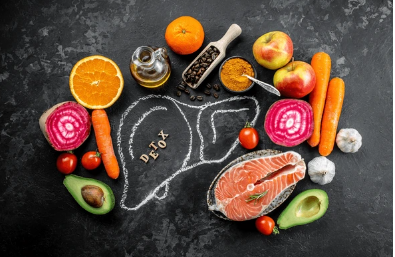
As we age, the body begins to blink its versions of check engine lights, letting us know that the super-sophisticated machine that is the human body needs some TLC. Speaking about this super-sophisticated machine, there’s something to be said about how one’s mind worries when it comes to one’s own health.
Diagnosed with fatty liver? Oh, no. Suddenly, the consciousness goes into a spiral with blaring medical soap opera imagery (looking at you, Gray’s Anatomy and House, M.D.) of enlarged organs throbbing and on the verge of rupture. And, in your consciousness’s defense, the response to such a diagnosis is well-warranted. We only get the one body, and when something happens to the vessel, the occupant has every right to panic.
But not too much panic. For there’s a cure or control for a lot of health issues and diseases nowadays that did not exist before. Thanks to the advancement of modern medicine, increasing awareness of holistic health, and a general improvement in the quality of life, we have multiple avenues of cures and treatments available for our health issues.
Fatty liver disease, also known as hepatic steatosis, is one of them. It’s one of those blaring red emergency signals for which Google will tell you there’s no treatment. In Google’s defense, its algorithm is designed to make youspend more time on the platform. So, of course, it’s going to give ominous results. Anything to make you stay.
But do not worry. Here, you will find information that will actually help you tackle your fatty liver and potentially reverse it.
What is fatty liver disease?
Fatty liver disease occurs when the liver becomes fat. Excess fat on the liver may go unnoticed for a long time, but it can also progress into more severe conditions such as inflammation, scarring, and even cirrhosis. In seniors, fatty liver can arise as a symptom of:
- Age-related metabolic changes
- Reduced physical activity
- Medication side-effects
- Poor diet
- Alcohol consumption
- Diabetes
- Hypertension
But the good news is that diet plays an extremely powerful role in reversing and managing fatty liver disease, and paired with other holistic options such as exercise, abstinence from drug and alcohol abuse, and losing weight, it can prevent further damage and reverse the damage that’s already occurred.
In order to understand why the aforementioned options treat fatty liver, we need to look at the 2 types of fatty liver disease.
- Non-Alcoholic Fatty Liver Disease (NAFLD): This is the kind that’s linked to insulin resistance, metabolic syndrome, and obesity.
- Alcoholic Fatty Liver Disease: This type is caused by excessive alcohol consumption, impairing the liver’s ability to break down fats.
From a holistic point of view, it’s quite understandable that in order to manage either of those types, we need to tackle the underlying causes.
The most important of these being your diet.
Why Your Diet Can Reverse Fatty Liver
Massive props to the liver, it is one heck of a self-healing organ if given the right tools and circumstances. Not only is it the largest internal organ, but it’s also capable of regenerating itself! Now, if you give your body foods that are rich in antioxidants, healthy fats, fiber, and anti-inflammatory compounds, you’ll help your liver detoxify itself, reduce fat buildup, and improve its overall function.
And as the liver’s way of saying, “Hey, thanks for the assist, I’ll take it from here,” it’ll start to heal itself.
For seniors, these foods also help in stabilizing blood sugar levels, improve digestion, and boost vitality.
I’ll stop it with the suspense buildup and get to the foods in question now.
10 Foods To Help Defat Fatty Liver
Right off the bat, eating natural, unprocessed foods that contain fiber, protein, and complex carbohydrates is a good starting point to help heal your liver, provide you with energy, and make you feel like you’ve had a hearty meal.
With a lot of diets, people worry that the change in food options might not make them feel full. Worry not in this case, because the foods we’re going to discuss will make you feel as full as after a Thanksgiving meal or a Holiday dinner with the family.

- Leafy Greens
Spinach, kale, arugula, Swiss chard, lettuce, collard greens, watercress, Bok choy, and other leafy greens are extremely nutrient-dense and low in calories. This makes them ideal not only for weight management but also for detoxifying your liver.
How? The antioxidants such as chlorophyll bind to heavy metals and toxins and remove them from your body.
The nitrates in leafy greens improve blood flow and reduce oxidative stress.
Add a handful of spinach to your morning omelet or blend kale into a smoothie for a very nutrient-packed start to the day.
And also, Popeye. Come on, if the guy eats spinach like it’s nobody’s business and has got muscles for days, you can’t go wrong with it either.
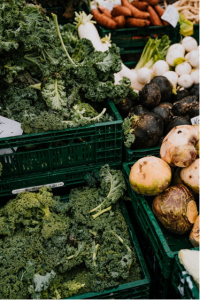
- Cruciferous Vegetables
These include broccoli, brussels sprouts, cabbage, cauliflower, turnips, and radishes. We haven’t even made it past 2 items on the list, and we’ve already got the fixings of an amazing salad on our hands.
High in sulfur compounds such as sulforaphane, these veggies help activate liver enzymes that are necessary for detoxification, reducing liver fats, and preventing inflammation.
Roast or steam some broccoli and drizzle it with olive oil and lemon for simple, delicious, and liver-friendly side dish with your meal.
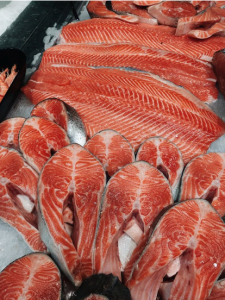
- Fatty Fish
The trouble with compiling lists such as these is that your mouth starts to water halfway through the process. I mean, now we’re talking about salmon, mackerel, sardines, herring, tuna, trout, halibut, and anchovies!
These fish are rich in omega-3 fatty acids which help reduce liver fat and inflammation. They also improve triglyceride levels and insulin sensitivity.
A good start to integrating fatty fish in your diet is two servings per week. I understand that fresh fish isn’t always an option, so you can also consider canned sardines or mackerel in olive oil as a convenient alternative.

- Walnuts
Walnuts are amazing. They’re high in omega-3 fatty acids and polyphenols, which not only protect your liver from oxidative damage but also your brain cells, improving your cognitive function.
A sprinkle of walnuts on salads or oatmeal for a satisfying, crunchy snack can take care of your mind and body!
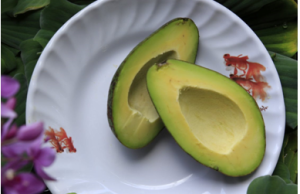
- Avocados
Millennials started the whole avocado trend, and given that the older millennials are well-past their forties and soon to approach their fifties, it’s quite fitting to add this fruit to the list, because it’s not just a hip, funky food to add on top of your toast; it’s also packed with monosaturated fats and antioxidants that support liver health, lower bad cholesterol, and increase good cholesterol, reducing the strain on your liver.
Mash some avocado and apply it on a whole-grain toast for a quick snack or use it as a creamy base for your salad dressings. The rich, full flavor of this wondrous fruit will leave you feeling satisfied and healthy.

- Green Tea
There’s something so calming about green tea that it’s the perfect drink for lazy afternoons. Theanine in green tea leaves reduces mental and physical stress, producing a relaxing effect all over your body. Also, the catechins present in green tea reduce fat accumulation in the liver.
Drink a nice cup of green tea in the morning to feel calm, hydrated, and fresh throughout the day.
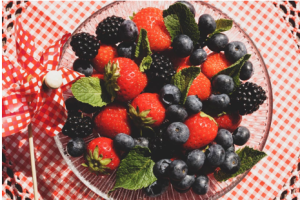
- Berries
Did you know that bananas are also berries? Strange, right? And strawberries are, in fact, not berries. From a botanical perspective, strawberries are known as an aggregate fruit, which means they’re made up of smaller fruits. Science is wild, I’m telling you.
But, for the sake of congruency, we’re going to include strawberries as berries in this list. Blueberries, raspberries, acai berries, cranberries, and mulberries are a) super delicious, and b) rich in anthocyanins which reduce inflammation and oxidative stress, protecting the liver from damage while also boosting its regenerative process.
Top off your morning yogurt bowl with mix of fresh berries for a sweet, healthy, and cool breakfast.

- Olive Oil
You cannot go wrong with olive oil. The cornerstone of Mediterranean diet, this tasty oil with its high content of monounsaturated fats and anti-inflammatory compounds serves to reduce fat deposits in your body and give your liver the support it needs.
A gentle drizzle of olive of extra virgin olive oil on your salads and veggies really brings out the flavor in your food. You can also opt to use olive oil as your primary cooking oil, and notice the difference it makes in taste, and eventually, your health.
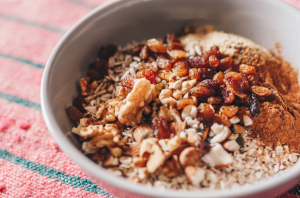
- Oats
I know people don’t like oats as a standalone food in general, so we have copious amounts of toppings we can use with them. Even off this list, you can use berries and walnuts to make your oatmeal taste better.
But on a health-related note, oats contain beta-glucan, a type of soluble fiber that not only reduces cholesterol but also regulates your blood sugar level, supporting liver healthy by reducing fat accumulation in the body.
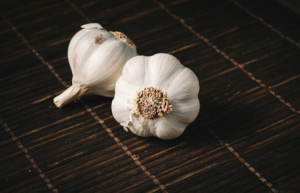
- Garlic
Sorry, vampires with fatty livers, but this is one food that you cannot have. Besides the power to hold Dracula at bay, garlic also contains allicin, a powerful antioxidant and anti-inflammatory chemical. Adding garlic to your diet will reduce your body weight and fat accumulation.
Consider adding some fresh garlic to your soups, stir-fries, or roasted veggies for a flavorful and healthy meal.
The Path To A Healthier Liver
Starts with one step.
Sustainable changes.
And nothing’s more sustainable a change than adjusting your diet. The liver is an extremely resilient organ, and with the right support, it can recover from damage and regenerate.
If you pair these dietary strategies with a healthy lifestyle, you’ll give your liver the best chance it needs to thrive well into your golden years!
Where are you at in your journey to better liver health? Have you already started incorporating liver friendly foods into your diet, or are you just getting started? Share your progress, challenges, or questions in the comments below – we’d love to hear about your experience and support each other along the way!
With diet and exercise, fatty liver disease can be reversed. Now that we’ve shared 10 foods to help you get started, it’s time to take the next step!
Join the 5-Day Balance Challenge to improve your balance, get your body moving, and support your liver’s healing journey.
Your health transformation starts today!

Hi Alison! Fantastic and very informative post! Several years ago my doctor said I had a fatty liver. I looked at him and said, “what, is that even possible?” He prescribed many of the same solutions that you presented in your post and it worked! Then I slipped off that wagon and went back to old eating habits and the fatty liver was back. I got back on a better eating regimen and my body thanked me for it. Now if only I can lose some of that other fattiness on my body in addition to what was on my liver. 🙂 ! I guess the common factory is diet, movement/exercise and a healthy mindset. For me, I love everything that you described in this post so that makes sticking to better eating habits easier. Unfortunately, I like everything else that I shouldn’t so I will practice moderation and balance in both mind and body. Wow, that was pretty deep, huh? Have a wonderful day my friend and thank you for this important post!
Ernie, I am so proud of you. It is so hard to make changes even in the face of a diagnosis like fatty liver. It is hard to always stick to that diet, their are a lot of temptations out there, I have fallen for many. It’s a lifetime diet, so I allow myself to endulge every no and then. And I find when I really stick to it I crave good foods and don’t want the bad one’s as much. It’s crazy how much diet effects how we feel.
Diet, movement/exercise and a healthy mindset is the equation fo a long healthy happy life. Let’s practice one day at a time and practice acceptance when we slip up and gratitude when we get it right!
Wow, this post is like a wake-up call and a pep talk rolled into one! First off, the humor totally hit the spot—Gray’s Anatomy and Google’s ominous vibes had me laughing because, let’s be real, we’ve all been there. Now, off to drizzle some olive oil and sprinkle walnuts on…well, everything!
The latest research on alcohol consumption is ominous to say the least. Even one glass of wine or spirits leads to cancer, according to the latest research. In fact, warning labels are going to be placed on bottles of alcohol or at least there is a movement a foot to make that change. So the latest recommendations to drink a glass or two of wine a day is out the window.
I wonder what other health recommendations we’ve taken to heart will change in the coming years? I am a big proponent of listening to my body and hearing what it tells me and guides me to do. No exception.
It’s interesting how recommendations evolve as science uncovers more about our health. You bring up a great point about listening to your body—it’s such a personal approach to wellness. It’s important to recognize that what works for one person might not work for another, and being in tune with our bodies can often help guide us to the right decisions for our own health. I think we’ll continue to see changes in health guidelines, especially as more research comes out. But what’s crucial is finding a balance that aligns with both science and how we feel individually. What do you think are some other areas of health where recommendations might shift in the future? I’m curious to hear your take!
Alison, Thank you for such an informative and reassuring post! I appreciate how you explained the science behind fatty liver disease in simple terms while providing actionable steps to manage and reverse it. The focus on natural, everyday foods like leafy greens, walnuts, and olive oil makes it feel achievable, even for someone like me who’s balancing multiple commitments. Your emphasis on sustainable changes really hit home—small adjustments truly can lead to big improvements. I’m excited to start incorporating these foods and look forward to your next post for more valuable tips! Atif
Hi Atif,
Thank you so much for your kind words! I’m really glad the post was helpful and that the science behind fatty liver disease was easy to understand. It’s all about those small, sustainable changes that add up over time, especially when life gets busy. I’m excited for you to start incorporating those foods, and I’m confident they’ll make a difference. Keep me posted on how it goes, and I look forward to sharing more tips with you soon!
Best,
Alison